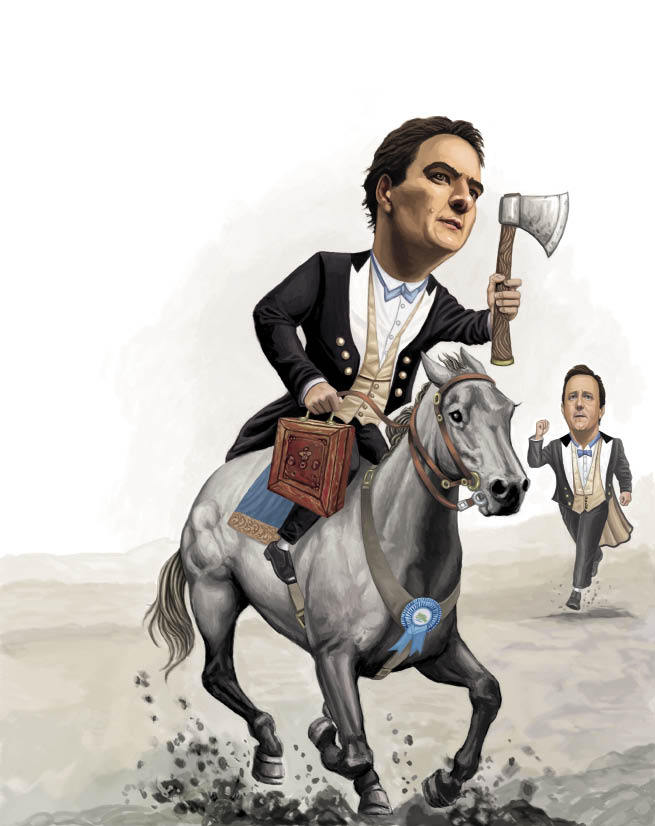There’s one subject that you don’t raise with David Cameron’s circle if you want the conversation to last: the election result. They don’t like to be reminded that they failed to win a majority. The Cameroons have been persuading themselves that coalition government is the best possible result. No. 10 has been dubbed ‘the love nest’ by the rest of Whitehall. The Tories inside gush about their new Liberal Democrat colleagues.
But just next door, there is a man who is still obsessing about how to win a Tory majority. George Osborne has digested the election result, does not regard it as a success, and is seeking to learn from it how best to create a Tory parliamentary majority in this country again. He has been observing recently that Gordon Brown spent 13 years successfully creating Labour voters — mainly through state dependency — and that the Tories need to reverse this process if they are to win. It would also mean fostering a new set of Tory voters in the way that Margaret Thatcher did with council house sales and the ‘Tell Sid’ expansion of share ownership.
This is the strategy that underpins Osborne’s first Budget. The headlines were, predictably, about cuts. But this Budget can be seen as Osborne taking charge — in every respect. It is the first dramatic step in his plan for Britain. Osborne’s agenda is distinct from (but by no means hostile to) David Cameron’s. The aim is a majority Conservative government. If the plan succeeds, there’ll be no need to have the Lib Dems in government in five years’ time.
Mr Cameron and Mr Osborne have been so inextricably linked since their emergence on to the political scene that it is easy to think of them as one and the same. Osborne ran both Cameron’s leadership campaign and his general election campaign, and is godfather to his son Elwen.









Comments
Join the debate for just £1 a month
Be part of the conversation with other Spectator readers by getting your first three months for £3.
UNLOCK ACCESS Just £1 a monthAlready a subscriber? Log in